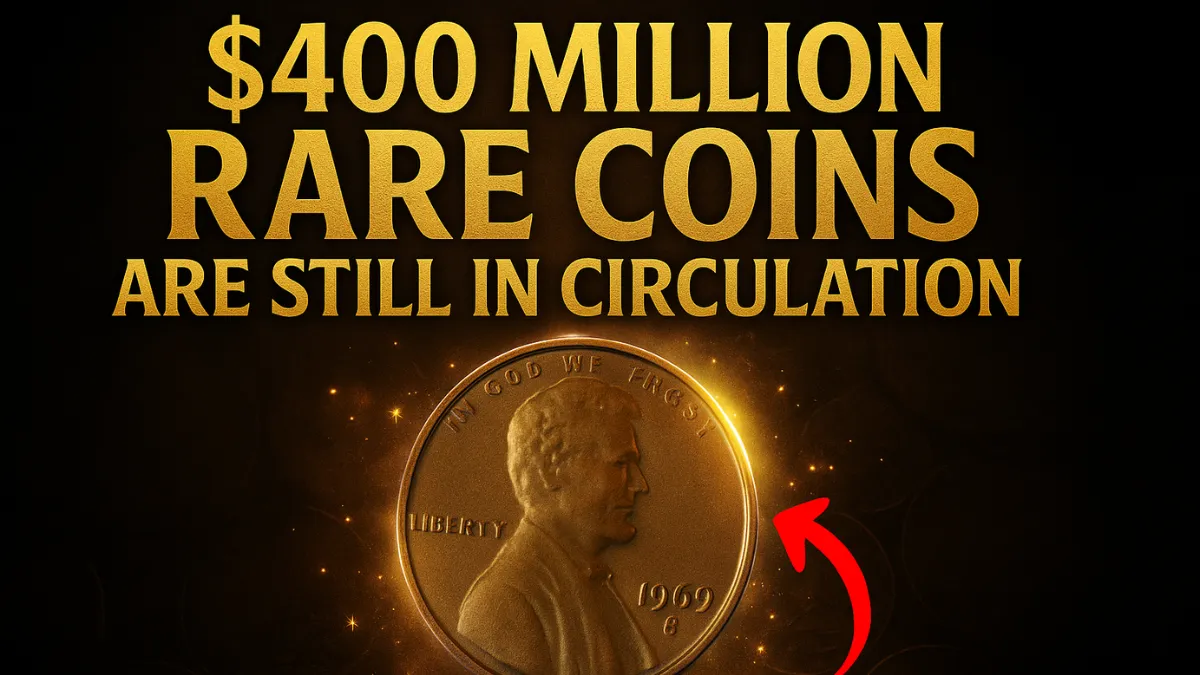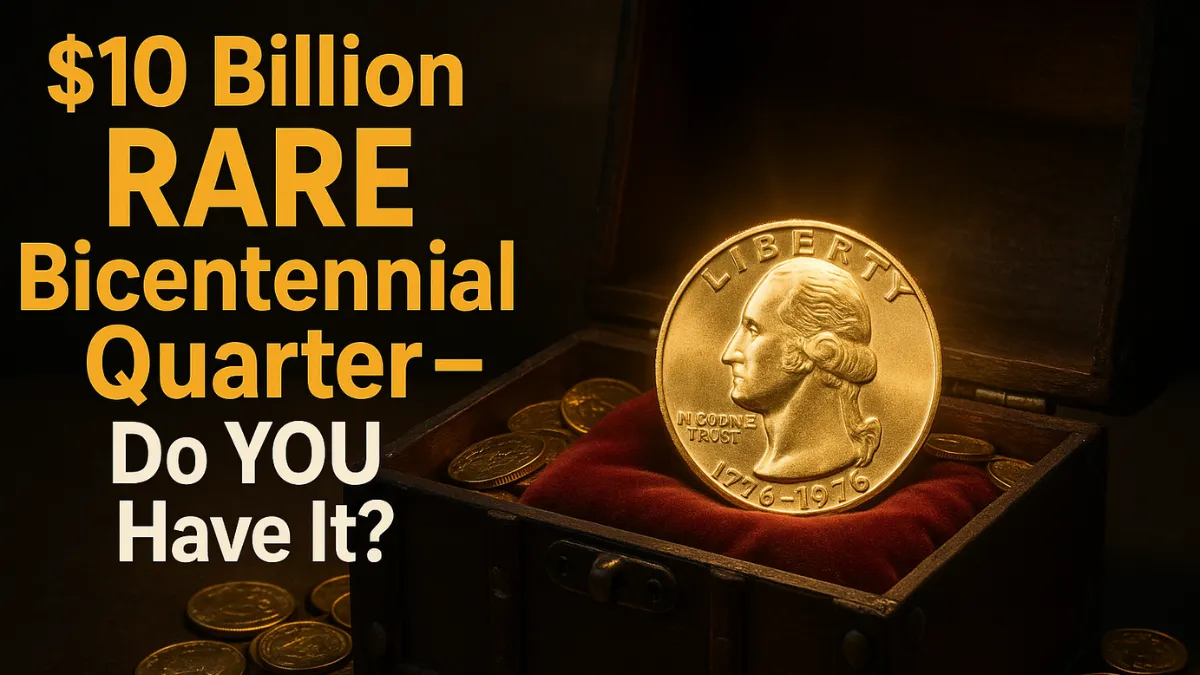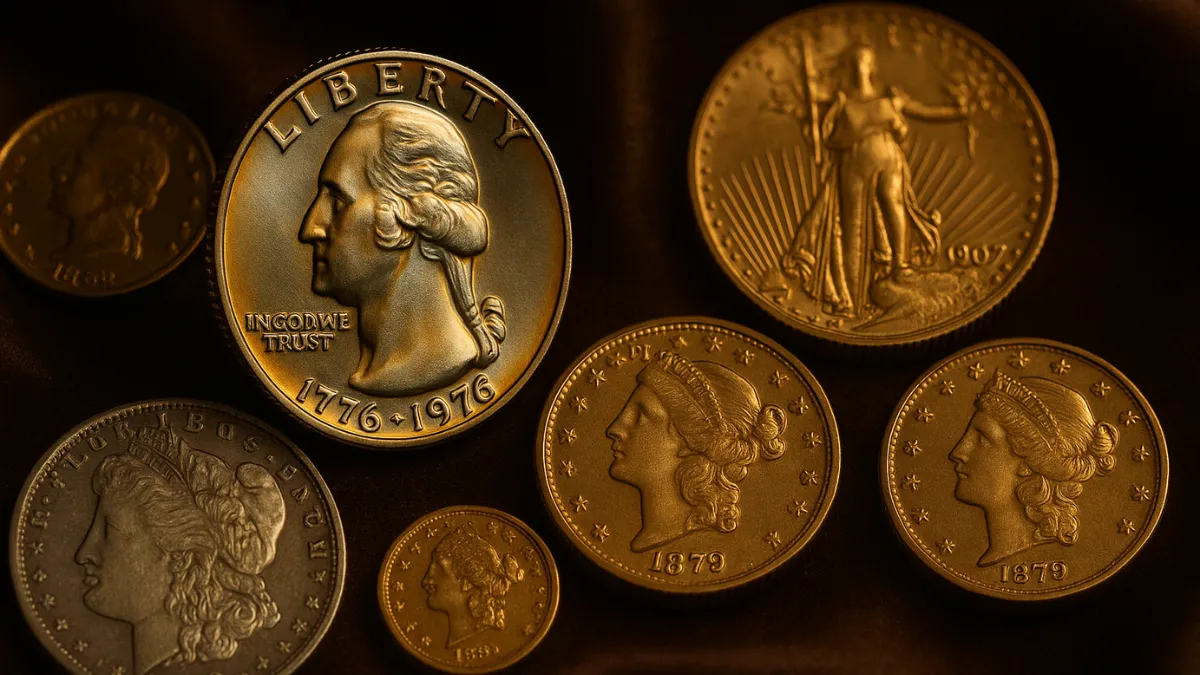Imagine the sound of loose change jingling in your pocket. What if one of those coins was more than just a penny or nickel? Across the United States, rare and valuable coins continue to circulate unnoticed, sitting in cash registers, piggy banks, and coin jars. These coins could be worth far more than their face value—sometimes even hundreds of thousands or millions of dollars to the right collector.
Numismatic experts estimate that rare coins still in circulation could be worth up to $400 million. Although finding one of these treasures is unlikely, every year, new stories emerge of individuals who have stumbled upon a valuable coin, changing their lives forever.
Whether it’s paying off a mortgage, funding a college education, or securing retirement savings, these serendipitous discoveries remind us that hidden gems are often closer than we think.
The Most Valuable Circulating Coins You Can Find
If you’re hoping to find a rare coin, it’s essential to know which types are worth your attention. Here’s a rundown of the most valuable coins still in circulation, which could be waiting for you in your change jar or pocket.
1943 Bronze Lincoln Cent: A WWII Error Coin
Perhaps the most famous coin error in American history, the 1943 bronze Lincoln cent is highly sought after by collectors. During World War II, copper was needed for the war effort, so pennies were minted using steel. However, a few copper planchets were accidentally fed into the presses, creating bronze-colored pennies.
Only about 20 examples are believed to exist, making them incredibly rare. These coins have been known to sell for anywhere between $100,000 and $1.7 million depending on their condition and mint mark. The story of Don Jenkins, who found one while going through his grandfather’s coin collection, is a perfect example of how this rare find changed his life overnight.
1955 Doubled Die Lincoln Cent: A Visible Error
The 1955 doubled die Lincoln cent is another prized find among collectors. The error features noticeable doubling of the obverse lettering and date, and the flaw is visible even without a magnifying glass.
Many of these coins have been found over the years, but thousands more are still believed to be circulating unnoticed. These coins can fetch anywhere from $25,000 to $50,000, with the most pristine examples reaching six figures.
1969-S and 1972 Doubled Die Lincoln Cents
Similar to the 1955 coin, the 1969-S and 1972 Lincoln cents also feature doubling on the obverse. The 1969-S version is much rarer, with only around 50 examples known to exist, and these coins can sell for as much as $126,000 in top condition.
The 1972 doubled die is a bit more common but still valuable, especially if in mint condition. These coins can sell for between $100 and $500 for circulated examples, while pristine ones may command $20,000 or more.
1982 Bronze Small Date Lincoln Cent: A Transitional Error
When the U.S. Mint switched from copper to zinc for pennies in 1982, a small number of bronze planchets were mistakenly used with small date dies meant for zinc cents.
These transitional errors are difficult to spot, requiring both weight and size analysis, but they can be worth anywhere from $10,000 to $25,000 if in excellent condition.
Modern Coins with Hidden Value
It’s not just old coins that can be worth a small fortune. Some modern coins have also made their mark in the numismatic world due to production errors. Here are a couple of notable examples:
2004-D Wisconsin State Quarter (Extra Leaf Variety)
In 2004, a mistake occurred with the Wisconsin state quarter, creating a rare variety with an extra leaf on the corn stalk. Known as the “Extra Leaf” variety, these quarters are valuable, especially the “High Leaf” and “Low Leaf” versions.
Well-preserved examples can sell for between $100 and $300, with the best ones fetching upwards of $1,000.
2005-P Minnesota Quarter (Doubled Die Reverse)
Another state quarter error from 2005, the Minnesota quarter features doubling on the reverse, particularly in the trees and the state outline. These coins can sell for anywhere from $50 to $150, and the more pristine specimens can be worth even more.
How to Increase Your Chances of Finding Rare Coins
While finding a rare coin is mostly a matter of luck, there are a few strategies you can use to improve your odds:
- Focus on Specific Denominations and Dates: Pay close attention to coins from specific years or types known for containing valuable errors. These include:
- Lincoln cents from 1943, 1955, 1969, 1972, and 1982
- Jefferson nickels from 1942–1945 (which contain silver)
- State quarters with known error varieties
- Pre-1965 dimes, quarters, and half dollars (which are made of 90% silver)
- Search Through Old Collections: You might be sitting on a small fortune if you have inherited old coin collections or have coins stored away in piggy banks. These items often contain coins that are now considered rare, especially if they were saved before they became widely recognized as valuable.
- Buy Coin Rolls from Banks: Purchasing rolls of coins from your local bank can be a fun and effective way to find rare coins. While most rolls will contain ordinary coins, there’s always the chance of stumbling upon a hidden treasure.
- Look for Coins in Everyday Transactions: Keep an eye on your change when you make everyday purchases. Many collectors have found rare coins in their regular spending.
Ensuring Authenticity: Why Professional Authentication Matters
With so much money involved in rare coins, counterfeiting is a real concern. To avoid being duped by fake coins, it’s crucial to have any potentially valuable coins authenticated by a professional grading service.
Reputable services like PCGS (Professional Coin Grading Service), NGC (Numismatic Guaranty Corporation), and ANACS (American Numismatic Association Certification Service) provide trustworthy evaluations.
Authentication services typically charge a fee (usually between $50 and $100), but it’s a small price to pay for ensuring your rare find is legitimate before selling or trading it.
In Conclusion: Keep Looking, Keep Dreaming
The hunt for rare coins may be a long shot, but the allure of finding a small treasure in your pocket is enough to keep many collectors on the lookout. Even if you don’t find a coin worth thousands, there are still plenty of valuable discoveries to be made—coins worth $50, $100, or more that can make your efforts worthwhile.
As long as you remain vigilant and knowledgeable about what to look for, you could very well be holding a piece of history—and a small fortune—in your hand without even realizing it. So next time you pay for a coffee or check the change in your pocket, take a closer look. You never know what rare coin might be waiting for you.




